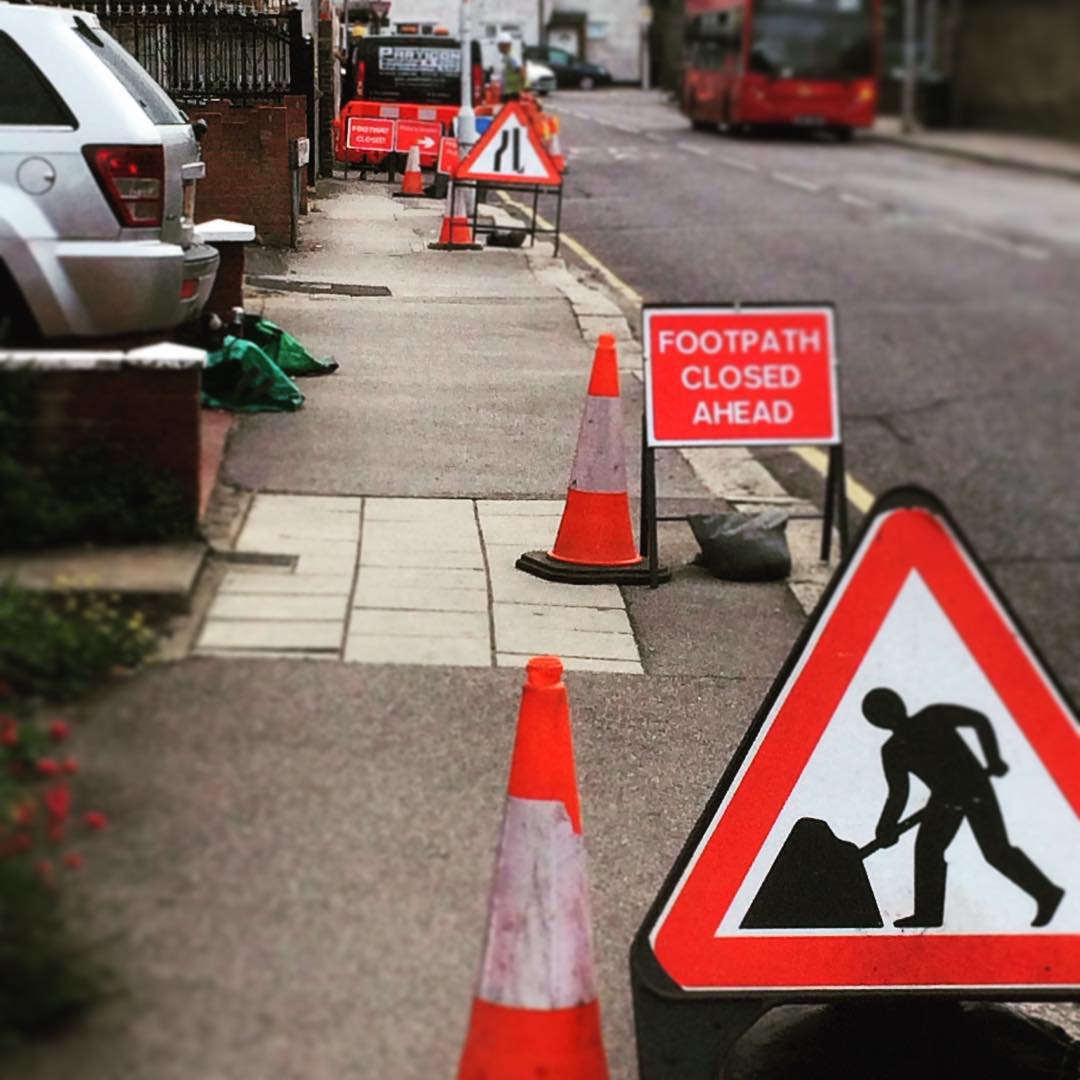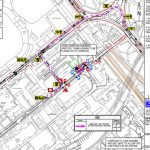What is Traffic Management?
☑️ What is Traffic Management?
☑️ What do UK traffic management companies do?
☑️ What is a traffic management system?
☑️ Why is traffic management necessary in the UK?
☑️ What is a traffic management operative at Traffic Management Ltd?
☑️ What is give and take traffic management?
☑️ What are stop and go boards?
☑️ What is a 15-minute temporary obstruction?
☑️ What are traffic convoy systems?
☑️ What is high speed traffic management?
☑️ What is a rolling road closure?
☑️ What is active traffic management?
☑️ Who controls traffic lights?
The process of guiding cars and pedestrians around obstructions is referred to as traffic management, sometimes called road traffic control. This could be a road surface project, an accident, a community gathering, the removal of a tree, traffic congestion, or anything else that could endanger or interfere with the movement of a car or pedestrian.
Along with many other safety benefits, the likelihood of cars colliding can be greatly reduced by effectively managing traffic in a safe and efficient manner.
Several traffic management options are available for use on UK roads, and we will discuss some of the more popular ones in this post.
Traffic control systems, such as traffic lights, lane closures, diversions, and “stop & go,” are designed, implemented, installed, and maintained by traffic management businesses with the least amount of disturbance to traffic flow. Additionally, their services make it possible for the UK’s road system to be maintained. The fact that traffic management greatly reduces the likelihood of accidents on the road is one of the primary reasons it is vital to drivers.
The design of installing traffic lighting, signage and guards on the carriageway that satisfies all requirements outlined in chapter 8 of the industry’s code of practice, “Safety at Street Works,” also referred to as the “Red Book,” constitutes a traffic management system.
Since it ensures a safe environment for both drivers and the general public utilising the UK’s road system, traffic management is essential. Where necessary, a safe traffic management system can be put in place to lower the likelihood of accidents on the road.
An individual who has received complete training in the NHSS sector programmes for traffic management standards is known as a traffic management operative.
“National Highways Sector Schemes” is what NHSS stands for. They are referred to as “bespoke quality management systems” by Highways England for companies that operate on UK roadways. Stated otherwise, these are certifications.
Any business operating on the road network must hold the necessary NHSS accreditation. This covers companies that manage traffic, maintain roads, fence, landscape, and so forth.
By blocking off one side of a road, “give and take” traffic control “tapers” traffic into a single file. When the road is clear, drivers pass at their own discretion.
Give and take is not appropriate in regions with heavy traffic or rapidly moving cars, as drivers determine when it is safe to pass. Give and take traffic management is limited to usage on routes with a 30 mph or lower speed restriction.
The approach is also limited to locations where vehicles can readily see both ends of the site; additionally, the length of the site cannot exceed 50 metres.
Stop and go signs are signs that have the words “go” on one side and “stop” on the other. Although they need to be used in conjunction with several road signs, they are a very portable kind of traffic control.
For roadworks areas that are 20 metres or smaller, one board can be utilised to regulate traffic flow. Two boards are needed for larger locations, one at each end. After then, both signs can read “stop” as traffic moves on.
Stop and go signs can be manually turned by a traffic management employee or remotely operated. Only during the day may remote-controlled boards be utilised; at night, manual operation is required.
Stop and go signs need to be evenly and directly lit at night.
A motorway or dual carriageway lane closure occurs when one or more lanes are blocked. This typically occurs as a result of repairs or maintenance on the route. There are three types of lane closures: rolling, temporary, and fixed (see here).
The Highways England website has the most recent information about lane and road closures in the United Kingdom.
Compared to portable lights, temporary traffic lights offer a longer-term solution. They are typically installed for lengthy projects that take several weeks or even months because they are meant to look more permanent than movable systems.
Traffic signals that are portable are used to direct traffic around obstructions such as construction projects, detours, and collisions.
There are various kinds of traffic lights that are movable. Some will use timers that turn automatically from red to green after a predetermined amount of time.
More contemporary lights will read the traffic and modify their schedules accordingly. This translates into more efficient traffic flow because light traffic coming from one direction won’t get as much “green time” as heavy traffic coming from another.
A brief shutdown of a road constitutes a temporary impediment. A sign that reads, “Temporary obstruction: 15 minutes delay” indicates it. The maximum closure duration is 15 minutes, as shown by the sign; naturally, personnel will attempt to reopen the road sooner if conditions permit.
Workers accepting material deliveries on a small road or felling a tree onto the carriageway could cause temporary blockages.
Since this type of traffic control is disruptive, it is only employed in situations where providing an alternate route is impractical.
A car directing traffic past a job site, initially in one way and then the other, is known as a convoy system for traffic control.
When using standard methods isn’t feasible—usually due to a limited highway—it is employed. Convoy traffic management makes use of small, specialised vehicles.
Projects that are completed from a slowly moving vehicle are known as mobile works. They consist of tasks like weed control and hedge trimming.
Traffic management must adapt to mobile work environments.
Road signs, specialised vehicles, and handheld signs are typically used by traffic management operators to maintain safe traffic flow near highway workers.
When managing traffic around short-duration works, which may include stops of up to an hour, comparable instruments are employed. Streetlight maintenance, sewer jetting, and pothole repairs are examples of short-duration projects.
High-speed dual carriageways and motorways, whether or not they have a hard shoulder, are subject to high-speed traffic management. Impact Protection Vehicles (IPV), Contraflow systems, Portable VMS (variable message signs), hard shoulder closures, lane closures, and other measures are frequently needed for high-speed traffic management.
A mobile, temporary barrier is called a rolling road closure. Also referred to as rolling roadblocks, these obstacles are frequently employed in parades, cycling races, and other events. Since they only stop traffic temporarily—for example, to allow cyclists to pass—they cause less disruption than temporary road closures.
For example, once highway workers restore the verge, a rolling lane closure can occur.
In general, two, three, or four-way traffic lights or a more intricate urban traffic control (UTC) system are considered forms of active traffic management. Passive traffic control measures like lane closures are the reverse of it.
When traffic is shifted to the other side of a carriageway to share space with vehicles travelling in the other direction, this is known as contraflow. On motorways, this is frequently required to permit lane closures during resurfacing work.
The majority of the time, traffic lights are operated by timers or automatic sensors, although occasionally a local controller is used.
Road traffic management enforcement necessitates the use of a traffic management order, or “TMO,” as a legal instrument. The Road Traffic Regulation Act of 1984 allows for the creation of four different types of TMOs: permanent, experimental, temporary, and special event. These are all decided by the local council.






Comments are closed.